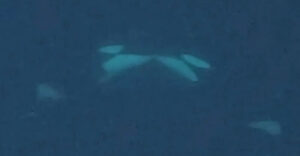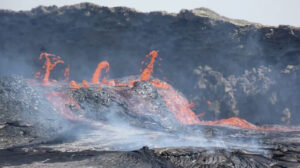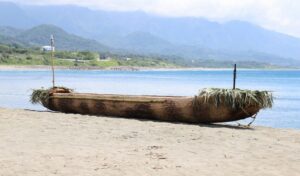Lying at the bottom of the cold North Atlantic, the Titanic has changed dramatically in the 112 years since it sank. New photos of the wreck show just how much the old ship has decayed in recent years.
RMS Titanic Inc. has owned the salvage rights of the wreck since the 1980s. During that period, they visited the site nine times. Recently, two remotely operated vehicles captured 24 hours of footage and over two million images of the site. The main aim was to pinpoint any artifacts at risk.

Photo: 20th Century Fox/Paramount/Shutterstock
The ship’s bow railing, familiar to every movie-goer as the spot where Jack taught Rose to fly, has largely fallen away in the last two years. It now lies on the ocean floor next to the ship.
At the same time, stalactites of rust are forming all over the ship, which is rapidly breaking down. No one knows how long it will last.


The ship’s bow railing, intact until recently, top, has now largely fallen away. Photo: RMS Titanic Inc.
“We are saddened by this loss and the inevitable decay of the ship,” the company said in a statement. Over the next few weeks and months, we will conduct a more thorough review of Titanic’s condition and her changes over time…This evidence strengthens our mission to preserve and document what we can before it is too late.”
The steady decline of the wreck has been visible in the last few expeditions. In 2019, Victor Vescovo’s expedition to the wreck showed the officers’ quarters on the starboard side had collapsed into the staterooms.
Exciting discovery
One exciting discovery of the recent expedition that is not about the deterioration shows a bronze statue of Diana. The 60cm-tall statue of the Roman goddess originally adorned the mantle of the fireplace in the First Class lounge.

Diana of Versailles statue. Photo: RMS Titanic Inc.
“The first-class lounge was the most beautiful, and unbelievably detailed, room on the ship,” said researcher James Penca. “And the centerpiece of that room was the Diana of Versailles.”
The room was torn apart when the ship sank, and the statue landed in the debris field. It had been photographed before, in 1986, but its exact location was unknown, so its rediscovery was exciting. It is rare to find any artwork on the shipwreck. Most of the art broke down relatively quickly after the ship sank.
The team plans to return to the site next year and recover the Diana statue and a number of other artifacts.
“To bring Diana back so people can see her with their own eyes — the value in that, to spark a love of history, of diving, of conservation, of shipwrecks, of sculpture…I could never leave that on the ocean floor,” says Penca.






